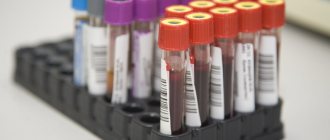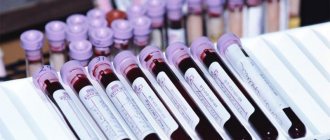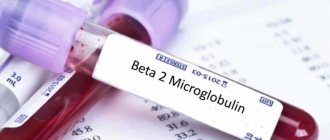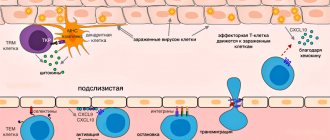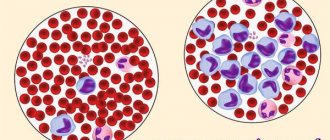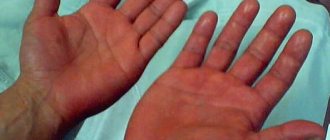ALT analysis
An analysis to determine the concentration of this substance in the body is used to diagnose liver disease and monitor the effectiveness of prescribed therapy. The main indication for the study is suspicion of acute or chronic hepatitis of viral or toxic origin, cirrhosis of the liver, primary malignant neoplasms of the organ or secondary metastatic lesions.
The growth of this substance in the body during hepatitis begins much earlier than the disease enters the icteric stage. In this way, it is possible to diagnose the disease at an early stage and begin treatment in a timely manner.
The analysis is also carried out as part of a comprehensive screening examination in order to assess the condition of the liver. The study is carried out before planned hospitalization for surgical treatment. The analysis is prescribed in conjunction with an aspartate aminotransferase test.
The level of ALT must be assessed together with other enzymes in pathologies of the pancreas and gallbladder - pancreatitis, cholecystitis, cholelithiasis. An analysis may be prescribed if the patient complains of general weakness of unknown etiology, fatigue, icteric skin and sclera, abdominal pain, a feeling of heaviness in the right hypochondrium, nausea, vomiting.
This analysis should also be performed in case of myocardial infarction and myocarditis. But in case of heart damage, assessing the ALT level is of secondary importance. The study is prescribed if the patient is suspected of myositis, myodystrophy, pain in the heart muscle, which cannot be explained by excessive physical exertion or another objective reason.
All donors are required to undergo this test.
The concentration of the level of this substance in the body must be assessed in case of chronic diseases, before prescribing medications - antitumor, antituberculosis. The study is also prescribed to assess the condition of the liver over time to assess the tolerability of a particular drug.
Complexes with this research
Biomarkers of liver functional capacity RUB 2,760 Composition
Preventive check-up Universal annual preventive screening RUB 11,960 Composition
Fitness control of sports nutrition Assessment of liver function, hormone levels and metabolism when taking sports nutrition RUB 5,140 Composition
IN OTHER COMPLEXES
- Advanced male anti-aging diagnostics RUB 33,710
- Nutritionist recommends RUB 7,570
- Men's check-up No. 1 RUB 18,570
- Biochemistry of blood. 19 indicators 6,280 R
- Examination during pregnancy. 1st trimester 16,690 RUR
Deciphering the ALT analysis
Alanine aminotransferase reference values for adults:
| Norm in U/l | Norm in mmol/l | |
| men | 45 | 252 |
| women | 34 | ≈ 190 |
WHY IS ALT LEVEL DETERMINED?
ALT is an enzyme of the transaminase group, present in a certain amount in the cells of the liver, kidneys and cardiovascular system. Determining the concentration of this substance allows you to get an idea of the condition of the liver and heart, as well as the effectiveness and safety of the treatment. The basic indication for diagnosis is the suspicion of liver disease, cirrhosis, viral or toxic hepatitis (chronic and acute). Also, a blood test for ALT allows for the timely detection of malignant primary or secondary metastatic liver lesions.
An increase in the level of the above enzyme in various types of hepatitis manifests itself much earlier than the pathology progresses to the icteric stage. Thanks to this, it becomes possible to timely diagnose the disease at the initial stage of its development and begin treatment, which can significantly increase the survival rate of patients with this diagnosis.
The analysis is part of standard screening diagnostics, which allows for a comprehensive assessment of the patient’s liver condition. The study is also carried out as part of preparation before planned hospitalization for surgical intervention. Often the analysis is prescribed in combination with an analysis of aspartate aminotransferase levels.
To assess the health status of a patient suffering from diseases of the pancreas (diabetes, pancreatitis, etc.) and gall bladder (cholecystitis, cholelithiasis, etc.), determining the level of ALT is also necessary, as is identifying the amount of other enzymes. Diagnosis is carried out as prescribed by the attending physician, in the presence of objective indications - general weakness of unknown origin, fatigue, icteric coloration of the skin and sclera, vomiting, nausea, pain and heaviness in the abdomen and right hypochondrium.
In addition, identifying the level of this enzyme is included in the standard diagnostic protocol for diseases of the cardiovascular system, especially when examining patients with suspected myocardial infarction or myocarditis. In case of organic lesions of the heart muscle, determining the level of ALT is not of paramount importance. Diagnosis is carried out if the patient is suspected of having myositis, muscular dystrophy and pain in the heart, which cannot be explained by excessive physical activity or any other objective reason.
All donors without exception undergo diagnostic testing of ALT levels. The concentration of this enzyme is necessarily assessed in the presence of certain types of chronic pathologies and before prescribing hepatotoxic drugs (antirheumatic, anticancer, antituberculosis and antimicrobial), as well as to monitor the liver condition during their use.
Normal levels of AST and ALT in the blood of women
Normal levels of AST and ALT in the blood of girls and women:
- AST - 0-31 units/l.;
- ALT - 0-35 units/l.
Normal values of AST and ALT in the blood of girls and women by age:
| Age | AST | ALT |
| newborns | 25-75 units/l.; | 48 units/l.; |
| 4-6 months | 15-60 units/l.; | 55 units/l.; |
| 3-6 years | 15-60 units/l.; | 32 units/l.; |
| 6-11 years | 15-60 units/l.; | 28 units/l.; |
| 11-18 years old | 15-60 units/l.; | 38 units/l.; |
| from 18 years old | Up to 31 units/l.; | Up to 35 units/l.; |
With age, the amount of AST and ALT in women decreases. Thus, the maximum level of ALT in the blood of a healthy woman over 50-55 years old is approximately 28 units/l. Closer to old age, its value varies from 5 units/l. up to 24 units/l.
Transferase levels in healthy girls and women can deviate from the norm by approximately 30%. This is a consequence of the following factors:
- stress, emotional outbursts/overloads;
- first trimester of pregnancy;
- excess body weight;
- taking certain medications;
- sports stress, overwork, poor sleep;
- consumption of alcoholic beverages and drugs.
Tests for coronavirus
- Test for coronavirus
- Coronavirus test for organizations
- Testing for coronavirus at home
- Testing for coronavirus at home in 12 hours!
- Testing for coronavirus in Lyubertsy in 12 hours!
- Testing for coronavirus in Nekrasovka in 12 hours!
- Testing for coronavirus in Korolev in 12 hours!
- Test for coronavirus on the Sokol metro station
- Coronavirus test at Kolomenskaya metro station
- Coronavirus test at Voykovskaya metro station
- Test for coronavirus in Nekrasovka
- Coronavirus test in Korolev
- Test for coronavirus in Lyubertsy
- Test for coronavirus in Mytishchi
- Test for coronavirus at home Mytishchi
- Test for coronavirus at home Korolev
- Test for coronavirus at home Lyubertsy
- Test for coronavirus at home Nekrasovka
Any tests can be taken at clinics in the East Clinic network.
References
- Interpretation of a biochemical blood test for liver pathology: A manual for doctors / M. G. Ipatova, P. V. Shumilov, Yu. G. Mukhina. M.: PrimaPrint, 2021.
- Ivashkin V.T., Shirokova E.N., Mayevskaya M.V. et al. Clinical recommendations of the Russian Gastroenterological Association and the Russian Society for the Study of the Liver for the diagnosis and treatment of cholestasis // Russian Journal of Gastroenterology, Hepatology, Coloproctology. 2015. No. 2.
- Clinical and laboratory diagnosis of liver diseases / V. S. Kamyshnikov. M.: MEDpress-inform, 2013.
- Brief clinical recommendations for the correction of hepatotoxicity induced by antitumor chemotherapy: - Larionova V. B., Gromova E. G., Zeynalova P. A., Snegova A. V. - 8 p.
- Clinical guidelines for the diagnosis and treatment of von Willebrand disease.
- Clinical guidelines for the diagnosis and treatment of cholestasis. - Moscow 2013.
- Drug-induced liver damage (clinical recommendations for doctors) V. T. Ivashkin, A. Yu. Baranovsky, K. L. Raikhelson, L. K. Palgova, M. V. Mayevskaya, E. A. Kondrashina, N. V. Marchenko , T. P. Nekrasova, I. G. Nikitin. — St. Petersburg, 2021.
- Letter of the Ministry of Health of the Russian Federation dated November 2, 2021 N 15-4/10/2-7675 On the direction of clinical recommendations (treatment protocol) “Acute fatty liver degeneration in pregnant women: intensive care and obstetric tactics.”
What does the AST blood test mean?
AST, AST, AST or aspartate aminotransferase is the same concept, denoting one of the enzymes of protein metabolism in the body. This enzyme is responsible for the synthesis of amino acids that make up cell membranes and tissues. AST is not active in all organs. Moreover, this type of aminotransferases can be classified as specific enzymes, the excess activity of which indicates a fairly narrow range of pathological conditions. Most of AST is found in the myocardium (heart muscle), hepatocytes (liver tissue), neurons of the brain and muscle tissue of skeletal muscles. This is explained by a fairly high level of metabolic processes in them and the need for maximum cell adaptability to maintain its structure. This enzyme helps them with this.
As long as the structure of cells containing AST is not disturbed, the amount of this enzyme in the plasma is minimal and does not exceed normal limits. As soon as their integrity is disrupted, this leads to its excessive release into the systemic circulation. This phenomenon will be recorded in the form of a natural increase in AST activity. The dependence should be directly proportional: the more active the cytolysis, the higher the AST level. The time after the onset of cell destruction is important - the longer it is, the less enzyme activity in the plasma will be.
When prescribing a biochemical blood test, they imply an analysis of the enzymatic activity of the plasma, among other indicators of which AST is necessarily examined. This requires venous blood, which is obtained by puncture of one of the peripheral veins in the amount of 15-20 milliliters. Its centrifugation allows you to separate the plasma from the formed elements, which then lends itself to various chemical reactions. During their course, AST activity in the blood is determined.
An AST study allows you to determine the presence of cell destruction (cytolysis) of the myocardium or liver. If other organs are affected, this indicator does not increase. Very often it is prescribed not only to confirm damage to specific tissues, but to carry out differential diagnosis or exclude cardiac and liver pathologies!
Important Notes
Material for research
Children under 7 years of age: venous blood/capillary blood (for special indications). Children over 7 years of age and adults: venous blood.
Capillary blood collection for research is carried out only for children under 7 years of age and adults whose veins are difficult to access (for special indications)!
According to GOST R 53079.4-2008, indications for taking capillary blood are possible in newborns, in patients with very small or hard-to-reach veins, with large-area burns, and in severely obese patients.
Aspartate aminotransferase (AST)
AST also increases in acute hepatitis and other severe lesions of hepatocytes. A moderate increase is observed in obstructive jaundice, in patients with liver metastases and cirrhosis. De Ritis coefficient, i.e. the ALT/AST ratio, normally equal to 1.33, is lower than this value in liver diseases, and higher in heart diseases.
If the activity of ALT and AST increases, we recommend that you sign up for a consultation with a hepatologist and undergo a liver examination using the Fibroscan apparatus -
Elastometry / elastography of the liver
How to prepare for donating blood for “biochemistry”?
In order for the results to be as accurate as possible, you must follow the rules for preparing for a blood test for a biochemical study:
- Within two days, switch to a gentle diet - eliminate fatty, sweet, spicy, salty, smoked foods, and also give up alcohol, coffee and strong tea;
- The day before, refrain from any stressful procedures and activities for the body - baths and saunas, contrast showers, heavy physical activity;
- If you are taking medications, discuss with your doctor whether they will affect the test results;
- 6-12 hours before the BAC, you should not eat any food or smoke. You are only allowed to drink plain water.
